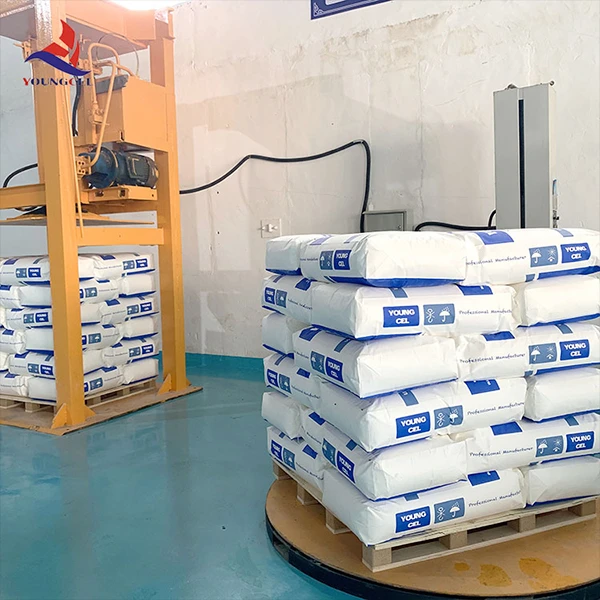The Chemistry of Cement An Essential Component of Modern Construction
Cement is an indispensable material in the field of construction, fundamentally altering our approach to infrastructure development and architectural design. Understanding the chemistry of cement is crucial, as it not only enhances our comprehension of its properties and behaviors but also guides the innovations and improvements required to meet the demands of modern engineering. This article delves into the chemical composition of cement, its hydration process, and its environmental implications.
Chemical Composition of Cement
Cement is primarily composed of four key compounds, each playing a specific role in its functionality 1. Tricalcium Silicate (C3S) This compound is responsible for the early strength of cement. It hydrates quickly and contributes to the initial setting and hardening processes. 2. Dicalcium Silicate (C2S) Unlike C3S, C2S hydrates more slowly and contributes to strength development over time. As the hydration progresses, it enhances the long-term strength of the concrete. 3. Tricalcium Aluminate (C3A) This component influences the setting time of the cement. It reacts rapidly with water and can lead to quick setting, which can be beneficial in specific applications. 4. Tetracalcium Aluminoferrite (C4AF) This compound adds to the color of cement and helps in the production of low-cost cement varieties. It has a comparatively minor impact on strength but assists in reducing the clinkering temperature during production.
These compounds are combined in specific proportions during the manufacturing process to achieve desired properties in the final product, such as compressive strength, workability, and durability.
Hydration Process
The hydration of cement is a complex chemical process that begins when water is added to the dry mix. The water molecules penetrate the surface of the cement particles, initiating a series of chemical reactions that lead to the formation of various hydration products.
cement chemical

The main hydration products include - Calcium Silicate Hydrate (C-S-H) This is the primary binding agent responsible for the strength and durability of concrete. Its formation is a result of the reaction between C3S, C2S, and water. C-S-H is a colloidal gel that fills the voids in the concrete mix, providing structural integrity. - Calcium Hydroxide (CH) Formed as a byproduct of C3S and C2S hydration, CH contributes to the alkalinity of the concrete and provides additional durability. - Ettringite This compound forms when C3A reacts with water and gypsum (added to control setting time). It plays a critical role in the early stages of hydration, helping to stabilize the mix.
The hydration process continues for years, albeit at a decreasing rate, which is why the age of concrete significantly affects its strength and performance.
Environmental Implications
While cement plays a pivotal role in construction, its production is associated with significant environmental concerns. The manufacturing of cement is energy-intensive and contributes approximately 8% of global CO2 emissions. The calcination of limestone (the primary raw material) releases carbon dioxide, while the combustion of fossil fuels for energy further exacerbates the issue.
In response to these environmental challenges, the cement industry is actively exploring alternative materials and processes. The use of supplementary cementitious materials (SCMs) such as fly ash, slag, and silica fume can reduce the amount of Portland cement needed in concrete mixes, leading to a lower carbon footprint. Additionally, innovations like carbon capture and storage (CCS) technologies are under development to mitigate emissions from cement plants.
Conclusion
The chemistry of cement is a gateway to understanding its vital role in construction. From its complex chemical composition and the intricate hydration processes that dictate its performance, to the pressing environmental challenges that demand innovation, cement remains a cornerstone of modern infrastructure. As the industry advances toward more sustainable practices, continuous research and development will be essential in ensuring that cement can meet the growing demands of society while minimizing its environmental impact. Ultimately, the future of cement chemistry holds the promise of balancing structural needs with ecological responsibility, paving the way for a greener construction industry.
-
Rdp Powder: Key Considerations for Wholesalers in the Building Materials IndustryNewsJul.08,2025
-
Key Considerations for Wholesalers: Navigating the World of Hpmc - Based ProductsNewsJul.08,2025
-
Hpmc Detergent: Key Considerations for WholesalersNewsJul.08,2025
-
Key Considerations for Wholesalers: China Hpmc For Tile Adhesive, Coating Additives, Concrete Additives, and MoreNewsJul.08,2025
-
Crucial Considerations for Wholesalers: Navigating the World of Construction MaterialsNewsJul.08,2025
-
Key Considerations for Wholesalers Sourcing Additive For Cement, Additive For Concrete, Additive For Putty from Additive Manufacturer Shijiazhuang Gaocheng District Yongfeng Cellulose Co., Ltd.NewsJul.08,2025




